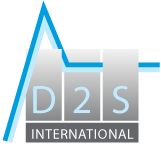Railway Transport – Simulations
Numerical simulations and predictions for airborne noise, structure borne noise, electro acoustics, ground borne noise and vibrations.
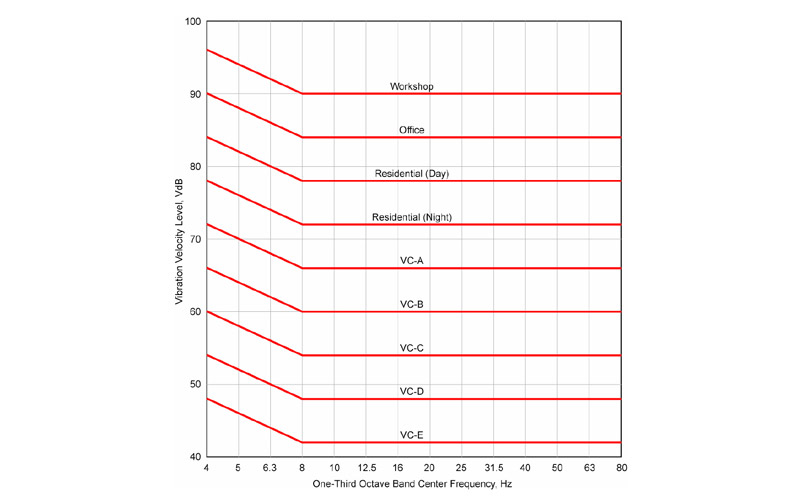
Vibrations
D2S International makes simulations of vibrations (e.g. vibration maps) for new, existing or upgraded railway infrastructure.
The different parameters that are taken into account are the soil characteristics, operational speed, vehicle characteristics (such as wheel quality, wheel diameter, non suspended mass, suspended mass, bogie characteristics, … ), track conditions (rail quality, track stiffness, sleeper interspacing, …).
Based on these calculated vibration levels, existing mitigation measures are proposed or new mitigation measures are designed.
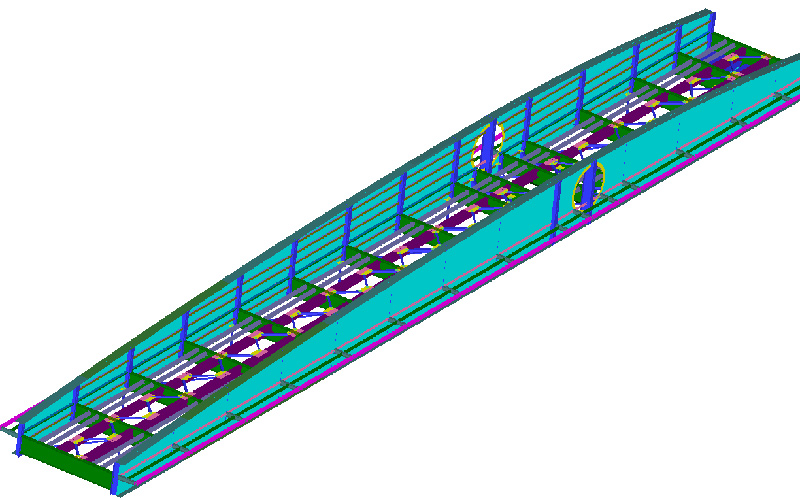
Structure borne noise
Steel structures like viaducts or bridges can radiate noise when they are exposed to a vibration source(s).
D2S International can simulate this noise with dedicated software and designs solutions to mitigate this noise.
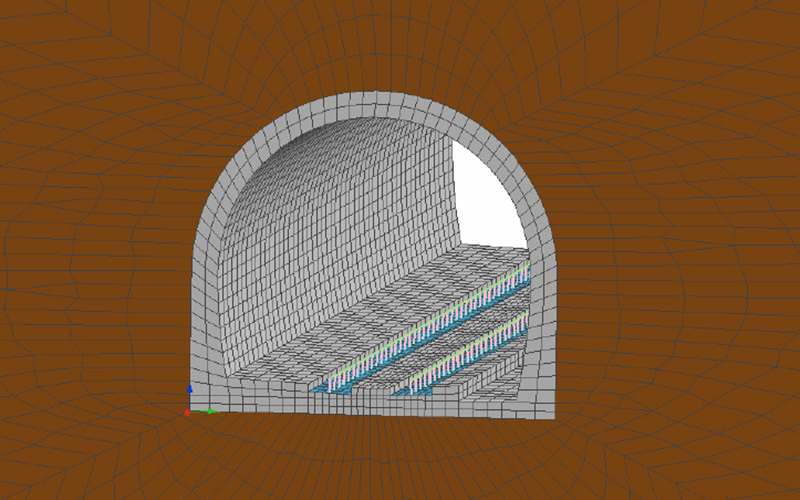
Ground borne noise
Steel structures like viaducts or bridges can radiate noise when they are exposed to a dynamic excitation, like a vehicle running over it.
D2S International simulates this noise with dedicated software and designs solutions to mitigate this noise.
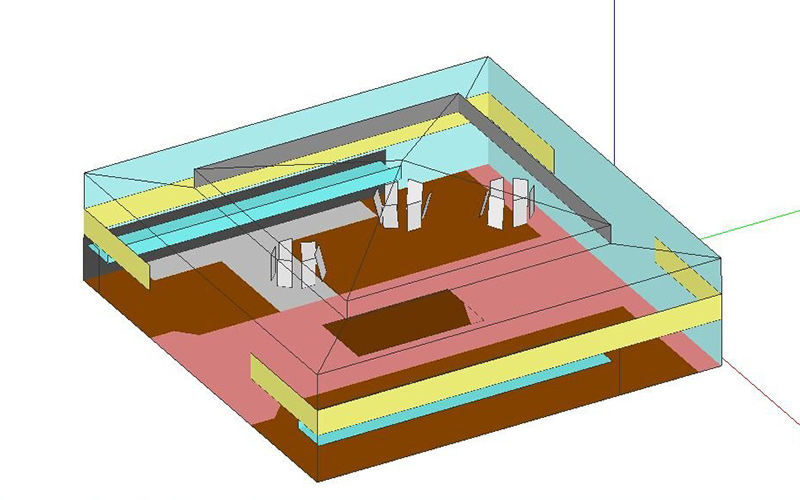
Electroacoustics
Electroacoustic simulations are made in order to design PA systems in railway stations or to optmise the acoustic interior of railway vehicles:
The design of PA systems include the simulation of the Speech Transmission Index (STI), Rapid Speech Transmission Index (RASTI), reverberation time or acoustic clarity for different configurations of the loudspeakers.
The simulations result in an optimal acoustical design of the PA systems. Background noise levels, absorbative elements, position and type of loudspeakers are taken into account. These simulations are supported by the measurement capabilities of D2S International.
Interior noise simulations result in an optimal acoustical comfort and safety for passengers.
EASE software is used to perform these simulations.
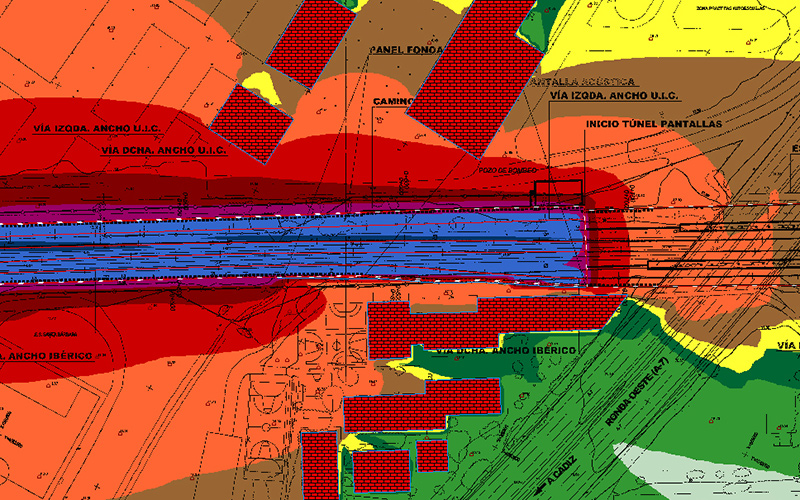
Air borne noise
Air borne noise simulations take into account:
- topography
- building heights
- acoustic emission spectra of rolling stock
- vehicle speed profiles
- drawings of track alignment
Noise levels generated in the environment, are calculated using the environmental noise calculation software IMMI.This software integrates all existing algorithms for environmental noise calculations, including (but not restricted to)NMPB – XP S 31-133, ISO 9613-2, RLS-90, DIN 18005, StL-86, VDI 2571/VDI 2714/VDI 2720, Schall 03, Transrapid, Semibel, CRN, CRTN, SRM II, TemaNord 1996:524 & 525, ÖAL 28, Ö-Norm S5011, RVS 3.02.
Our scope of works include but are not limited to:
- production of noise maps without considering mitigation measures
- comparison between calculated noise levels and noise criteria
- selection of the mitigation measures if required
- production of noise maps with consideration of the selected mitigation measures.
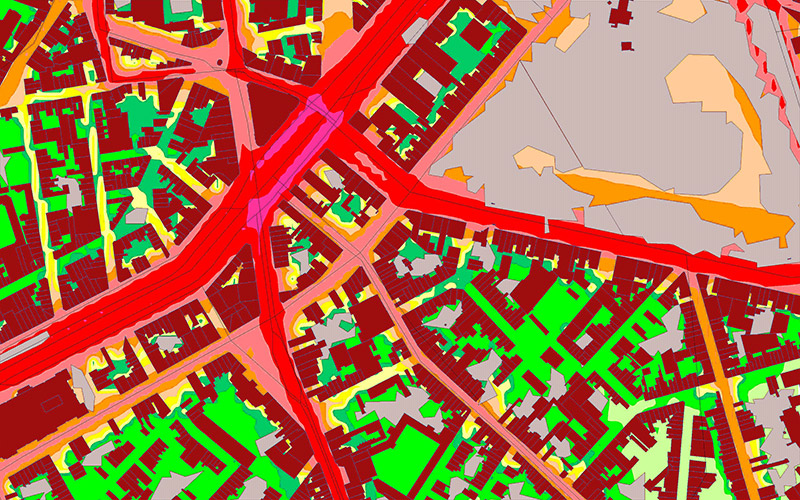
Noise mapping
D2S International is equipped with the software and experience to perform strategic noise mapping according to the European Directive 2002/49/EC and including all adaptations of recommendation 2003/613/EC.
Strategic noise mapping is more than noise maps only.
Strategic noise mapping includes:
- the production of strategic noise maps,
- the determination of the number of people exposed,
- the preservation of quiet areas, and
- action planning.
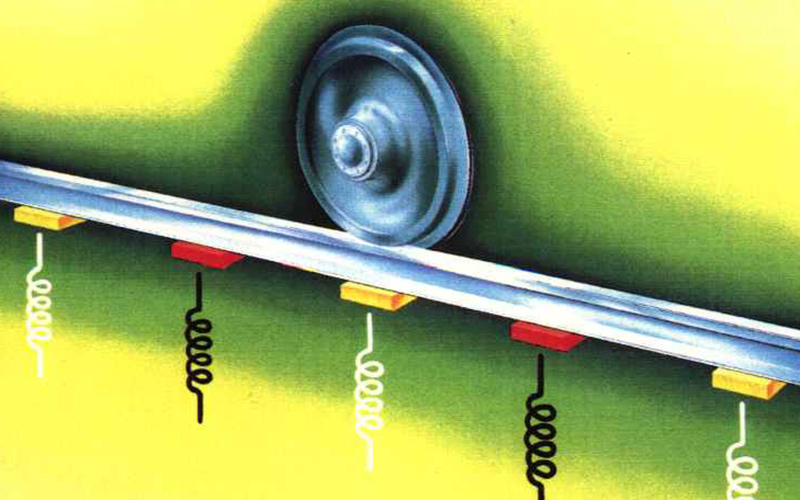
Wheel rail noise
WR-NOISE is a program which calculates the wayside noise generated by a railroad wheel rolling on a straight track.
The successive stages are :
- the roughness of the surfaces in contact produces a vertical displacement at the wheel/rail contact.This displacement is characterized by the load/velocity relation imposed by wheel and rail vertical mechanical impedances;
- that displacement induces vertical and transversal responses in the wheel and rail, corresponding to their mechanical impedances.And the vertical response of the rail induces transmission of vibrations to the ties and, if necessary, to the girder if the track lies on an elevated structure;
- the responses of all these elements (wheel, rail, tie and girder) generate acoustic radiation which, finally, through the contact area filter and the radiation efficiencies, produces the wayside noise.
As output of WR-NOISE, the program plots all physical quantities that appear in the model:
- roughness data;
- wheel and rail impedances and admittances;
- contact area filter attenuation;
- radiation efficiencies of all elements;
- radiated acoustic powers of all elements and total radiated acoustic power;
- average spectral vertical and horizontal velocities of wheel and rail;
- sound pressure levels at distance d of the track;
- rail acceleration;
- coupling factor between tie and girder;
- rail-sleeper transfer function;
- rail loss factor.
